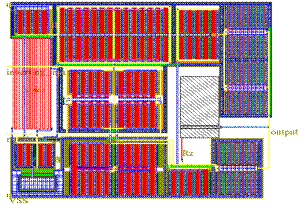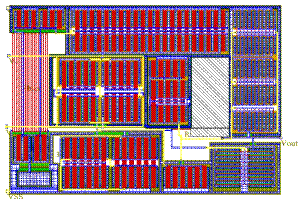|
Past Research |
Watermarking of VLSI Layouts
Students: Naveeen Narayan, Rexford D. Newbould, Khusro Sajid
| |
Watermarking is the embedding of data in a medium for ownership,
verification, distribution tracking, authentication, copyright protection,
and data hiding. It has been well studied for use in digital media such as
audio, digital images, and video. In this work, watermarking was extended
to the realm of computer-aided design (CAD) for physical design of
integrated circuits (ICs) in order to protect and facilitate re-use of
intellectual property (IP) blocks (circuitry). As designs become more
complex and cycle times shorter, the re-use of IP blocks is becoming more
and more important. However, in order to aid in the re-use, improved
methods for securing and tracking ownership need to be in place.
Watermarking valuable design blocks, whether custom transistors or standard
cells, is a practical method of securing ownership of the
property, even after local perturbations in the design. A method of
watermarking circuit elements was developed for fully-custom analog or
digital macrocell designs as well as analog or digital standard cell based
designs. This protection scheme thus applies to analog, digital, and
mixed-signal designs, with the only exception being that of gate array
implemented circuits.
Unwatermarked op amp and watermarked op amp:


This work was a collaborative effort with the Computer Systems Design
Laboratory (director: Prof. Jo Dale Carothers) in the Dept. of Electrical &
Computer Engineering.
Publications:
-
Naveen Narayan, Rexford D. Newbould, Jo Dale Carothers, Jeffrey J.
Rodriguez, and W. Timothy Holman, "IP Protection for VLSI Designs
Via Watermarking of Routes," in Proc. 14th Annual IEEE Intl.
ASIC/SOC Conf., Arlington, VA, Sept. 12-15, 2001, pp. 406-410. [ PDF ]
|
|
